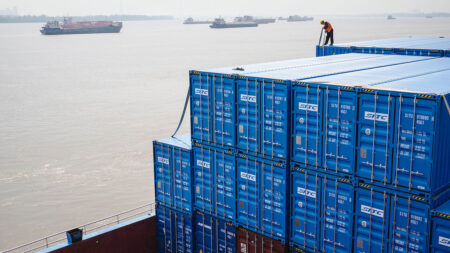The Possibility of a Soft Landing: A Shift in Economic Perspectives
A few years ago, the prevailing sentiment among economists and financial analysts was that the likelihood of a soft landing for the global economy was virtually non-existent. The term "soft landing" refers to the scenario in which an economy slows down gently without entering a recession. This optimistic outlook seems unreal against the backdrop of escalating inflation rates, disrupted supply chains, and geopolitical tensions that shook the foundation of markets worldwide. However, as economic indicators began to show signs of stabilization, perspectives shifted, leading many to reconsider the once-dominant belief that an economic downturn was imminent.
In the wake of the COVID-19 pandemic, nations worldwide faced unprecedented economic challenges. The initial responses included massive stimulus packages to prop up struggling economies. In the United States, for example, the Federal Reserve implemented aggressive monetary policies, slashing interest rates and purchasing large quantities of government securities. Meanwhile, the European Central Bank adopted similar measures, flooding the Eurozone with liquidity to combat the looming economic fallout. These interventions sparked concern regarding long-term inflation, leading to fears that central banks would soon be forced to raise interest rates, which could precipitate a recession.
Throughout 2021 and into 2022, policymakers grappled with the delicate balance of stimulating growth while keeping inflation in check. Concerns were further deepened by supply chain disruptions caused by lockdowns and labor shortages, which led to increased prices for consumer goods. In this environment, many economists were skeptical about the prospects for a soft landing, predicting that sustained inflation and interest rate hikes would, in all likelihood, lead to an economic contraction. Some even projected doom-and-gloom scenarios reminiscent of past recessions, casting a long shadow over consumer confidence and business investment.
However, contrary to these pessimistic forecasts, early data in 2023 began to paint a different picture. Consumer spending showed resilience, boosted by pent-up demand after prolonged periods of restrictions. Retail sectors that had initially suffered—including hospitality and travel—experienced a robust resurgence. The unemployment rate remained comparatively low, while job creation across various sectors provided additional fuel to economic growth. This unexpected influx of positive economic news ignited a sense of optimism among analysts who had previously predicted a hard landing.
As the narrative surrounding the economy evolved, several notable economists began to champion the possibility of a soft landing. They postulated that the adaptive nature of businesses and consumers, coupled with the easing of supply chain disruptions, would facilitate a gradual slowdown rather than a catastrophic downturn. They pointed to indicators such as the housing market, where despite cooling prices, there remained a balanced demand for homes and construction growth in areas like Texas and Florida.
Central banks supported this optimism by articulating a more measured approach to interest rate increases. Rather than aggressive hikes, banks like the Federal Reserve signaled a willingness to take incremental steps in adjusting rates according to economic signals. This approach allowed markets to maintain stability while giving businesses and consumers confidence that the economy could navigate challenges without entering a recessionary spiral.
Despite this newfound optimism, potential pitfalls still lurked on the horizon. A volatile geopolitical landscape, marked by ongoing tensions in Eastern Europe and potential fallout from trade conflicts, posed significant risks. Additionally, inflation rates, although moderating, continued to exceed central banks’ targets, necessitating vigilance in monetary policy. The unpredictability of global events meant that the pathways to sustainable growth remained fraught with uncertainty.
In conclusion, the transformation in the economic outlook from widespread pessimism about a hard landing to a more cautious optimism regarding the possibility of a soft landing reflects the complexities of today’s interwoven global marketplace. While the path forward is undoubtedly complex, the resilience exhibited by economies over the past year serves as a testament to their capacity for adaptation. Moving forward, it will be imperative for policymakers, businesses, and consumers to maintain a proactive approach, ensuring that the lessons learned during these turbulent times inform future strategies to foster sustained economic growth and stability.









